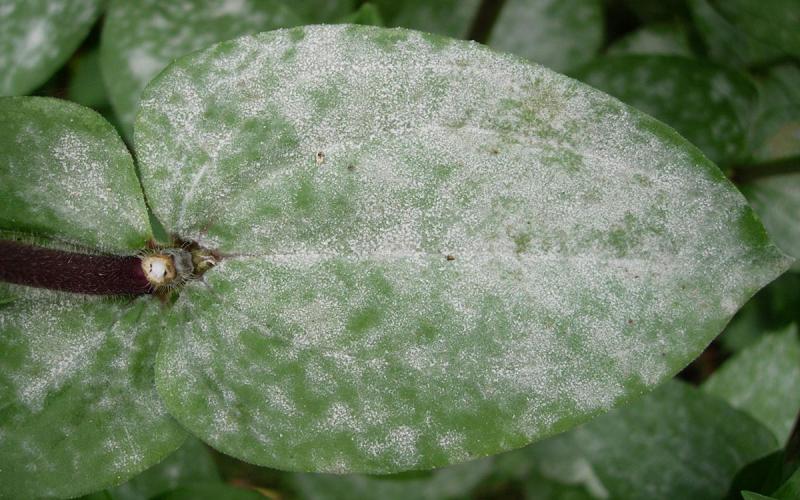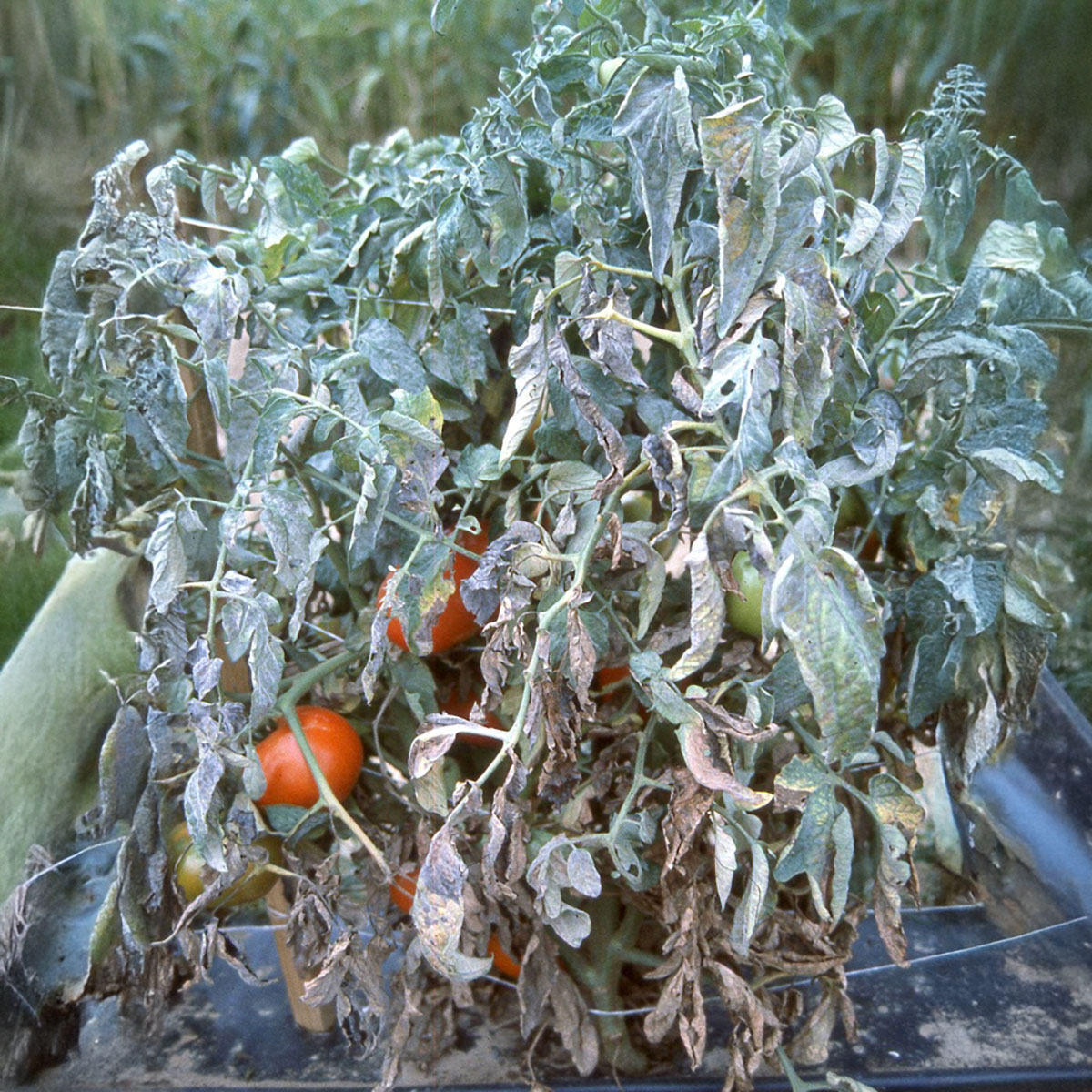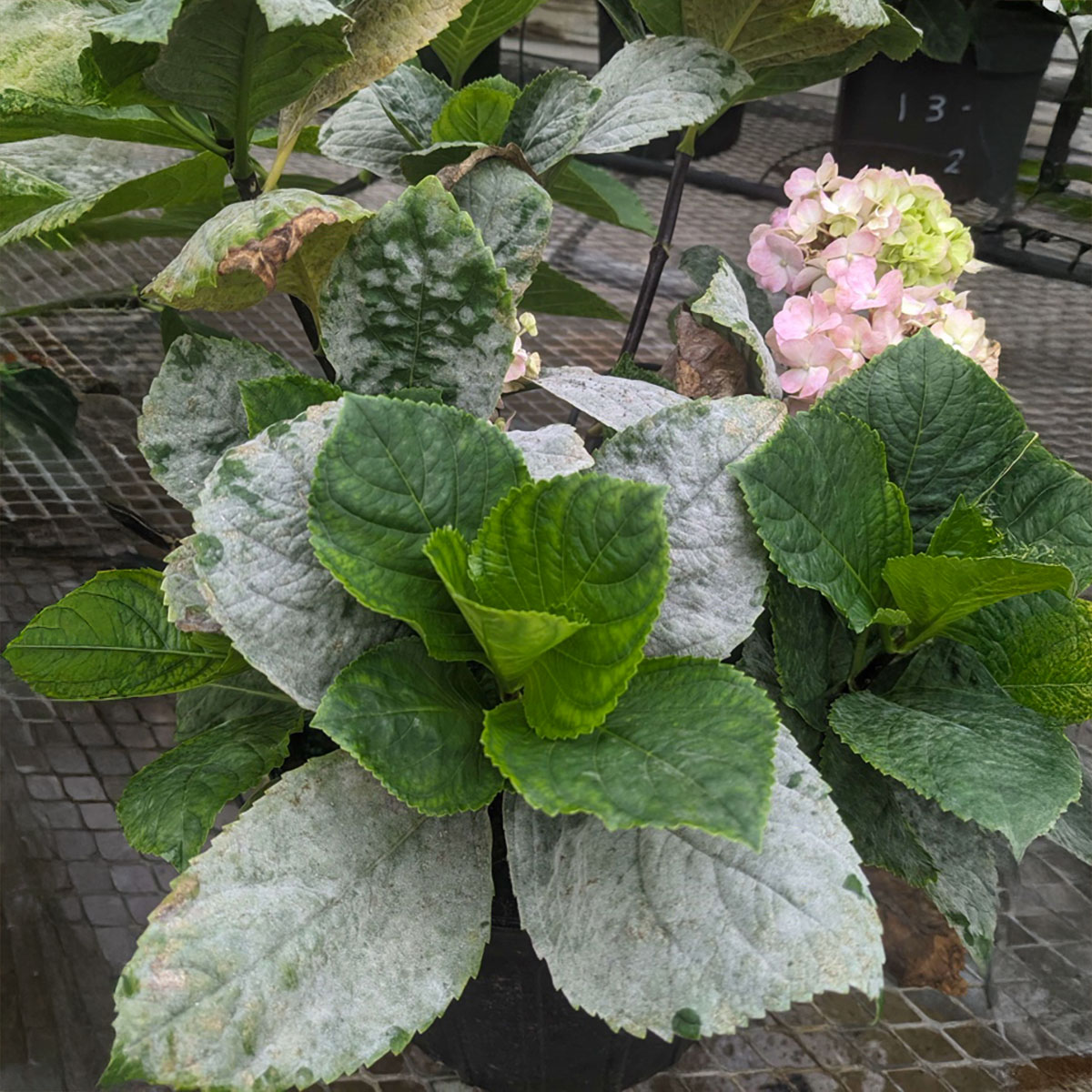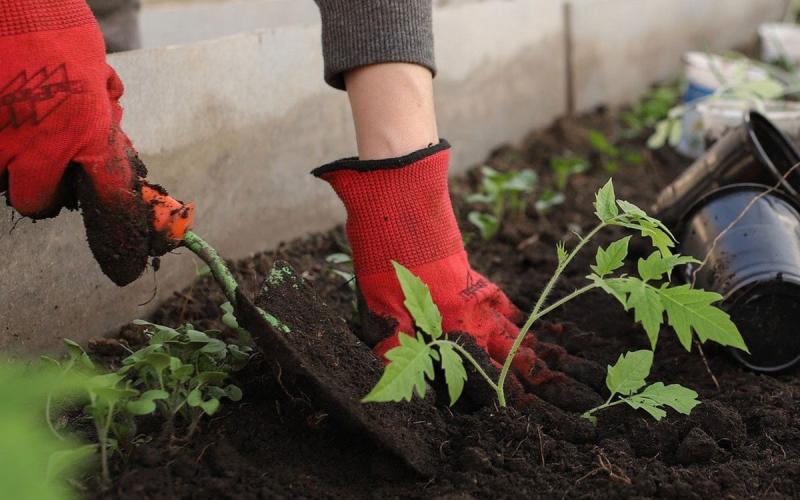
Written collaboratively by Madalyn Shires, Anna Hagemann, and Cody Molnar.
Is powdery mildew affecting your home garden? Powdery mildew (PM), from the family Erysiphaceae, is a common fungal disease that targets a wide range of hosts. There are up to 11,000 powdery mildew species that affect many different vegetables and ornamentals including but not limited to: peppers, peas, pumpkins, tomatoes, melons, eggplants, lettuce, roses, hydrangeas, begonias, asters, daisies, phlox, coreopsis, crabapple, verbena, and many more. For example, Erysiphe cruciferarum affects multiple hosts including broccoli, cauliflower, radishes, and turnips. In a similar manner, Erysiphe heraclei affects hosts including parsley, carrots, and parsnips. Despite the many different species and wide host range of PM, most appear as white powder on leaves and stems and are difficult to tell apart without microscopy or other laboratory techniques.
It is important to identify the presence of PM as soon as possible to slow the spread and prevent irreversible damage. Proper identification maintains your garden's aesthetics, increases vegetable yield, and improves overall plant health. It is important to note that this disease most commonly develops in the mid-summer months to the start of fall when temperatures are intensified. This is when fruit production is most heightened as well.
Symptoms
Powdery mildew is generally simple to diagnose and recognize if the symptoms are understood correctly. Symptoms can vary by host, but several aspects of disease are consistent across its many hosts. As described by its name, it resembles a white powder that can develop on any exposed foliage. Both leaves and stems can be infected as well as fruiting bodies. Symptoms are most prevalent on the upper surfaces of leaf tissues and typically begin at the base of the plant. After prolonged disease, leaves may become chlorotic and wither. Deformities and molting may occur resulting in distortions of leaves and stems.


Moderate to warm temperatures often increases disease incidence. PM can develop in shaded and cool conditions as well, especially where foliage density is high. Both wind and the flow of water can disperse fungal spores, resulting in the spread of PM. This fungus can overwinter in the soil and plant debris as cleistothecia (an overwintering sporulation structure that appears as small black dots on infected plant material around fall). Therefore, it can spread in the following growing season if proper control measures are not taken.
Management
There are a variety of successful ways to prevent PM from entering your garden. Most importantly, resistant plant varieties are the best way to avoid disease development. Planting locations should also be considered. Mildews are best reduced in full sun conditions, where plants are adequately spaced out from one another. PM struggles to persist in full sunlight as ultraviolet rays damage the fungus. Spacing of plants also reduces shade, increases air flow, and prevents disease transmission from plant to plant. Preventative fungicides can be applied before disease development as well. Generally, a PM species can only infect one family of plants, i.e. cucurbits but not Solanaceous plants.
If your plants are already infected, cultural and chemical approaches can be utilized. Simply pruning or removing infected foliage can reduce the spread of PM. Rinsing plants off with water can remove early PM from foliage. Take caution when using this approach if healthy plants are near to avoid spread as the spores are easily spread when foliage is disturbed. Curative fungicides are another option; be sure to use them as soon as possible to control disease formation.
When the growing season is over, remove and eradicate plant debris as the fungi can overwinter! Do not mulch plants that had PM as this will allow for the fungus to remain in your yard and allow a path for reinfection in the next season.
Identification
Correctly identifying this disease or any other fungal, bacterial, or viral disease is extremely important, as it aids in management decisions. Powdery mildews are generally easily recognized but can be mistaken for downy mildew. Downy mildew is generally only present on the underside of leaves, while PM is often on the top of leaves and stems. Please send plant disease questions to SDSU Extension Plant Pathology Specialist Dr. Madalyn Shires, SDSU Extension Horticulture Plant Pathology Field Specialist Cody Molnar or SDSU Extension Diagnostician, Connie Tande.
Samples can also be sent to the SDSU Plant Diagnostic Clinic for fee-based diagnostics. The clinic’s mailing address is 1148 Medary Ave, 2207-D, 1451 Stadium Road, Brookings, SD 57007-1090 and the physical address for sample drop off is Berg Ag Hall Room 203 (business hours) or 001 (after hours and weekends). For more information, visit the SDSU Plant Diagnostic Clinic website.
References
- Powdery Mildew on Vegetables, University of California IPM.
- Powdery Mildew Diseases of Ornamental Plants, University of Massachusetts Amherst.


